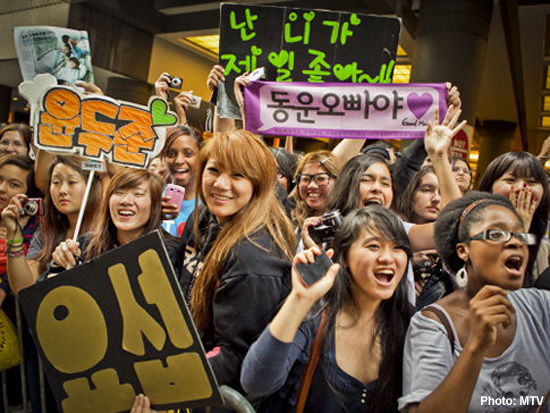Reading Reflection #8
Section A01
Korean American Youth and Transnational Flows of Popular Culture Across the Pacific
 |
| American K-pop fans |
When transnational immigrants enter a culture different from that of their native land, it is difficult to assimilate the two contrasting cultures. Many have felt that they don't fit into the American life and culture, simply because of a cultural division. Because of this divide, many have felt the need to adopt only the culture around them, causing a disconnect between the younger generations and their original heritage. With the power of media, such as film and television, we are able to repair this disconnect, allowing transnational immigrants to assimilate to both cultures. Similar to the example of Korean TV dramas mediating generational relationships expressed in Jung-Sun Park's article, my mother, grandmother and I sometimes gather around the TV to watch Filipino game shows. Although I don't understand Tagalog all too well, I am able to interact with my mom and grandma based on their native culture. Because they have assimilated themselves to the American culture after living here for thirty years, they have lost contact of the pop culture back in the Philippines. These TV shows give them a part of the culture they had left behind, even if for a brief moment, while also teaching me a thing or two about what I am missing from the Philippines.
While the core consumers for global popular culture are the transnational immigrant youth themselves who want to keep that understanding of their community and identity, I have also noticed how it has affected non-immigrant youth. My best friend, for example, has become so addicted to the K-POP culture over the last couple of years that I know a few things about K-pop artists and the Korean culture. The power of media and youth consumption has allowed for diversity and knowledge of cultures to spread, allowing many to feel more comfortable within a society they feel like they don't' fully belong in.
QUESTION: Similar to the Southeast Asians who have traveled to America after the Vietnam War, transnational immigrants today have found themselves stuck in the "in-between", where they aren't fully involved with neither their host society or native land. In what ways are these two groups different? Is it possible for those to escape from the "in-between"?
No comments:
Post a Comment